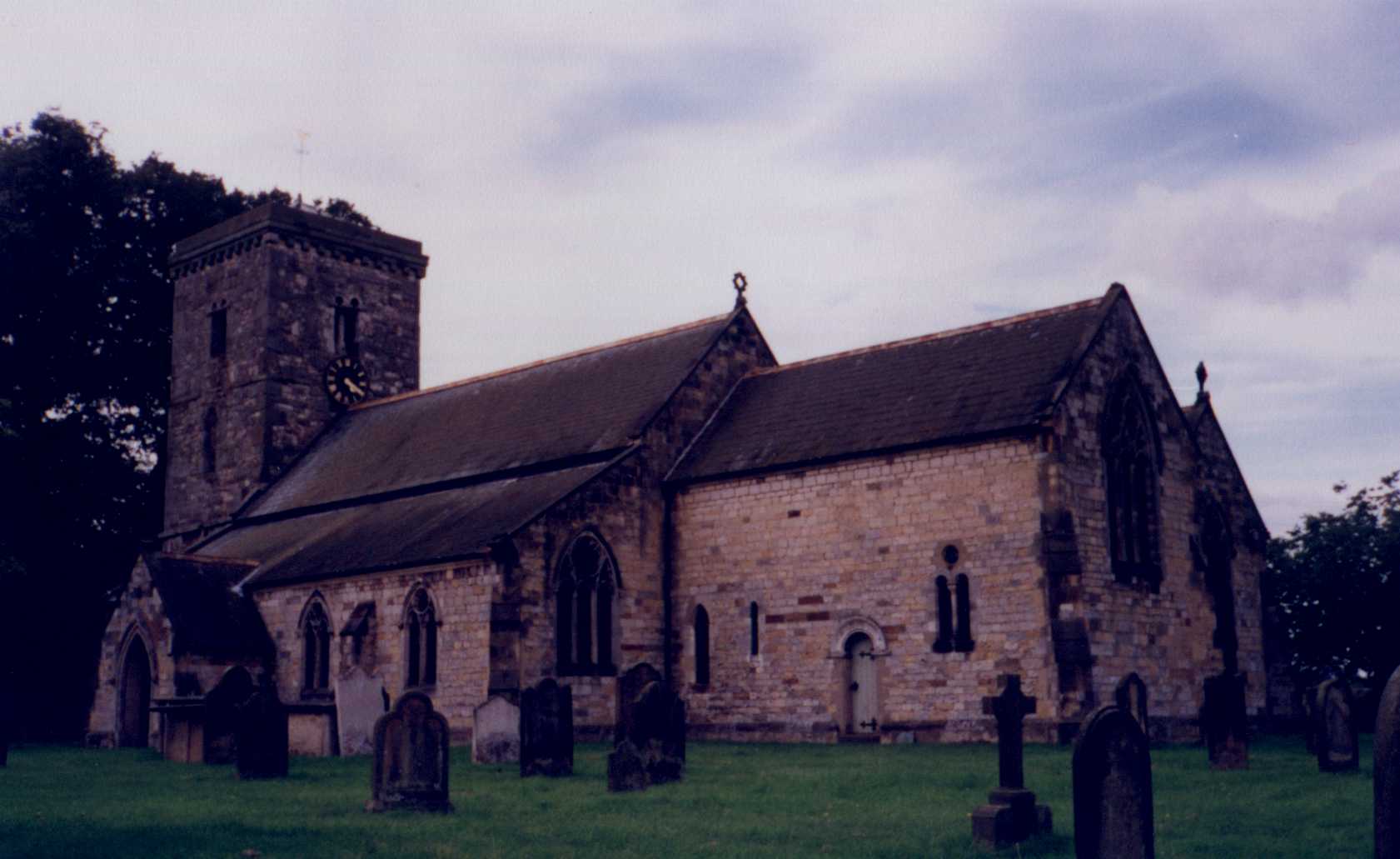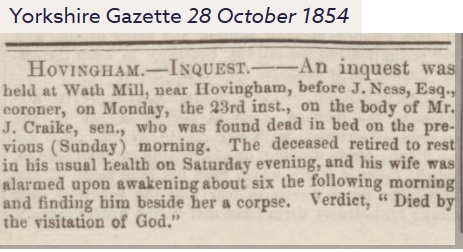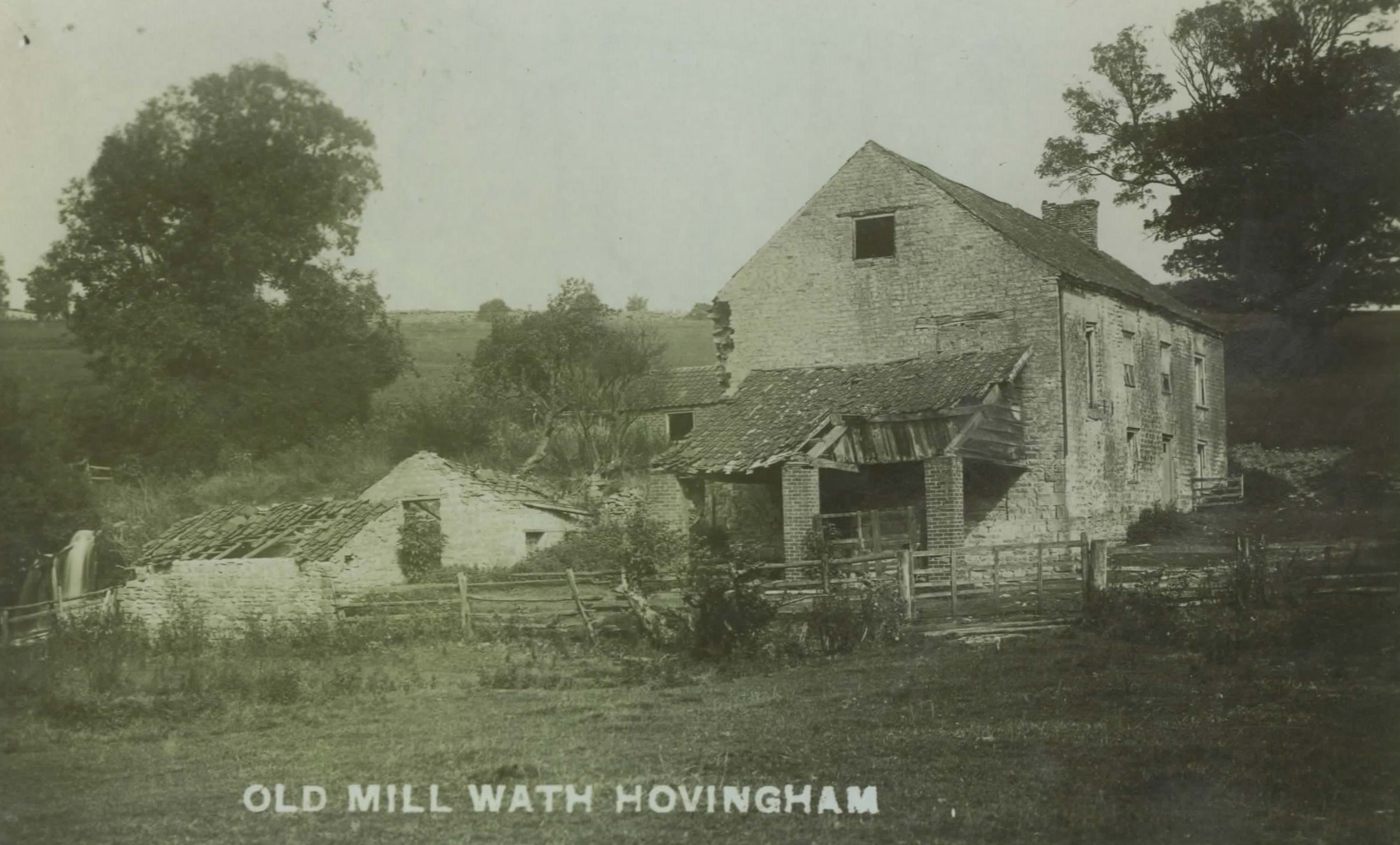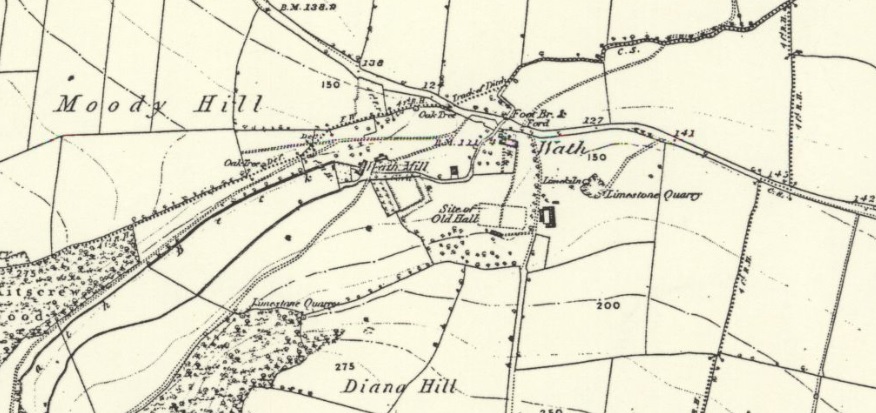John Craike was born in 1784 in Wath, Yorkshire and baptised on 25 April 1784 at Hovingham. His parents were John Craike 1755-1802 and Rachel Crozier 1757-1820.

All Saints Hovingham
John Craike, like his father John, and grandfather Enoch, were the millers at Wath Corn Mill near Hovingham in Yorkshire.
John Craike senior b 1755 married Rachel Crozier on 17 July 1783 at Hovingham, Yorkshire by license. The license stated that John was aged 27 and was of Hovingham, and Rachel was 28 of the parish of Hinderskelf, Yorkshire.
Rachel was the daughter of John Crozier and Frances Southern of New Malton, and was baptised on 27 March 1757 at Hovingham. John Crozier married widow Frances Southern on 24 September 1754 at St Michaels in New Malton, Yorkshire by banns.
Enoch Craike was born in 1716 in nearby Dalby, and baptised on 25 March 1716 in Dalby to father William Craike. Enoch married Mary Broderick around 1740 in Yorkshire and had seven children while being the miller at Wath Mill.
On 3 October 1804 at Hovingham, John married Susannah Banks.
Susannah was born in 1776 in Bulmer, Yorkshire and baptised on 12 July 1774 in Bulmer to parents Richard Banks 1741-1820 and Susannah Hopper 1745-1794.
John and Susannah had the following children –
- Mary Ann b 1804 d 1858
- William b 1806 d 1868
- Susannah b 1808 d 1880 married William Skelton, miller, born 1799 Terrington
- John b 1810 d 1889
- Jane b 1812 d 1873
- Richard Banks b 1814 d 1891
- Rachael b 1817 d 1826
- Elizabeth b 1818 d 1882
John Craike died at Wath Mill in October 1854, and an inquest was held on his body at the mill on 25 October 1854, with the verdict being that he died from a ‘visitation of God’. His son, John Craike, junior born 1810 then took over the Wath Mill.

Yorkshire Gazette 28 Oct 1854
John senior’s wife Susannah Craike, nee Banks, died the following year on 23 March 1855 at Wath Mill.
In both 1861 and 1871 John Craike (junior) is running the Wath Mill (farmer of 44 acres and miller employing 4 men) with his wife Mary, and sister Susannah’s son Richard is working there as a miller’s labourer.
In the 1881 census Richard Skelton is described as the miller’s labourer (to Mr Fred Sunley) at the nearby Hovingham corn mill. He resides there with his wife Mary Ann, and children William and Mary.

Old postcard of Wath Mill 1913 (courtesy Rydale Family History Society)
On the back of the postcard it was addressed to Miss Craike, the Grange, Cottingham, near Hull. It was in the possession of Mr Henry Frear, a son of Miss Craike, daughter of the Miller at Wath.
The Wath Mill, was a corn mill, and mentioned in many old documents…
The Historical Atlas of North Yorkshire ed. Robin Butlin, cartographer Nick Staley 2003, Page 50, “Wath – Roman Camp 100-200AD and Page 165, Medieval water mill at Wath…”
From the Victoria County History, “At Wath, about half a mile out of Hovingham, on the road to Malton, standing by the stream, is the Mill House, an old stone building. The capital messuage here is mentioned in 1343…”
Kelly’s Directory 1889. “Wath is a township, about 1 mile south-east of Hovingham station and 8 miles west from Malton. Here are the remains of an old hall, supposed to have been a seat of the Mowbrays, ancient lords of this manor. The trustees of the Earl of Carlisle are lords of the manor and sole landowners. The soil is partly limestone and partly redstone, and produces wheat, barley and oats. The area is 350 acres; the population in 1881 was 11.”
Milling was a skilled job. The miller had to be proficient in a number of skills, such as milling the corn, bagging the flour or meal, delivering it, maintaining the water supply to the mill, and performing maintenance on the milling machinery and equipment.
Much of the millers job was weather dependent, as a bad corn harvest could drive up the price of corn, or a drought may mean no harvest, or a poor one, and therefore no work at all.
This is a link to the Ordnance Survey map of 1856 for Wath -https://maps.nls.uk/view/102344533

Wath Mill and Township 1856
In 1889 John Craike junior died, and the following year in 1890, Wath Mill and Farm were sold by Castle Howard Estate to Hovingham Estate along with Moor House Farm (Yorkshire Herald 27 Oct 1890). In 1900, there were hopes by Hovingham Estate that the mill could provide a water supply for the surrounding villages, but the scheme never reached fruition.

